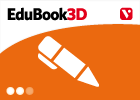Cargando...
Recursos educativos
-
Nivel educativo
-
Competencias
-
Tipología
-
Idioma
-
Tipo de medio
-
Tipo de actividad
-
Destinatarios
-
Tipo de audiencia
-
Creador
Lo más buscado
- Actividades de repaso en primero
- Thomas Edison
- Ejercicios escolares para niños de 8 años
- Imprimir números romanos
- Actividades cientificas para niños
- Dibujos colorear verano
- Relieve de América
- Ejercicios escolares para niños de 3 años
- Razonamiento verbal
- Alimentos transgénicos en primero
- Juegos matemáticos cuarto
- Manualidades infantiles para niños
- Auxiliary verbs
- Animales acuáticos
- Experimentos de botánica
-

Answer. The chemical composition of living things 2.4
EduBook Organización
- 2005 visitas
What are the different types of biomolecules that are found in living things?
-

Answer. The Solar System 3.6
EduBook Organización
- 1981 visitas
What are dwarf planets? Where are they in the Solar System?
-

Answer. The Earth's crust 1.4
EduBook Organización
- 1918 visitas
What are the most abundant geochemical elements? Where are the found?
-

Match. Yes or No
EduBook Organización
- 1889 visitas
Answer ✔ or ✘ about mammals: have fur ➝ are cold-blooded ➝ feed their young ➝ are invertebrates ➝
-

Answer. Rocks 4.5
EduBook Organización
- 1765 visitas
What are the most important saline rocks? What are they used for?
-

Answer. Erosion of the Earth's surface
EduBook Organización
- 1764 visitas
What are the three main external geological forces? What are the four phases of change?
-

Answer. The origin of materials
EduBook Organización
- 1716 visitas
Complete the following sentence: Materials that are not found in nature are called materials.
-

Initial evaluation T12 01 - Light and sound
EduBook Organización
- 1598 visitas
Match the sentence halves: Light is... Sound is... Mirrors are... Lenses are...
-

Answer. Mosses and ferns 2.3
EduBook Organización
- 1542 visitas
What are spores? In which part of the moss or fern are they produced?
-

Final evaluation 03 - Plant reproduction
EduBook Organización
- 1392 visitas
Where in a flower are the pollen grains? And where are the seed-buds?
Te estamos redirigiendo a la ficha del libro...













